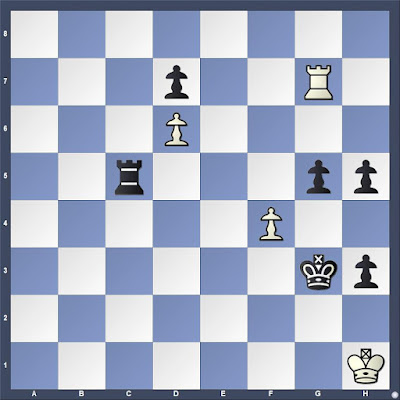During my reading yesterday, some underpromotion exercises captured my interest. Berger credits Carl Ferdinand von Jaenisch as the composer. I played them out against Stockfish on my iPad and found the second one required some calculation to get the knight to its proper posting.
White to move
1.Rxg5+ Rxg5 2.fxg5 h2 3.g6 Kh3 4.g7 h4
White to move
White must underpromote to a bishop or knight to avoid stalemate. In this instance, a bishop is the better choice, but a knight can win.
Berger's second exercise from Jaenisch differs in the placement of two pawns.
1.Rxg5+ Rxg5 2.fxg5 h2 3.g6 Kh3 4.g7 h4Berger's second exercise from Jaenisch differs in the placement of two pawns.
White to move
Now, while a bishop does not stalemate, it also cannot win. White must play 5.g8N.
5...Kg4
White to move
Berger's solution continues with 6.Nf6+. I played 6.Ne7, and the tablebases favor 6.Kxh2.Preceding these studies, Berger offers a brief explanation of the square of the pawn. Following these, is a section on the opposition with several illustrative positions, culminating in this important one from Giambattista Lolli, published in 1763.
White/Black to move
White to move wins; Black to move draws. For some reason, I found the draw hard to believe, but I've practiced the position against students many times since learning it more than ten years ago. Winning with White to move is one one of my requirements for the Bishop Award in my Scholastic Chess Awards.


















No comments:
Post a Comment